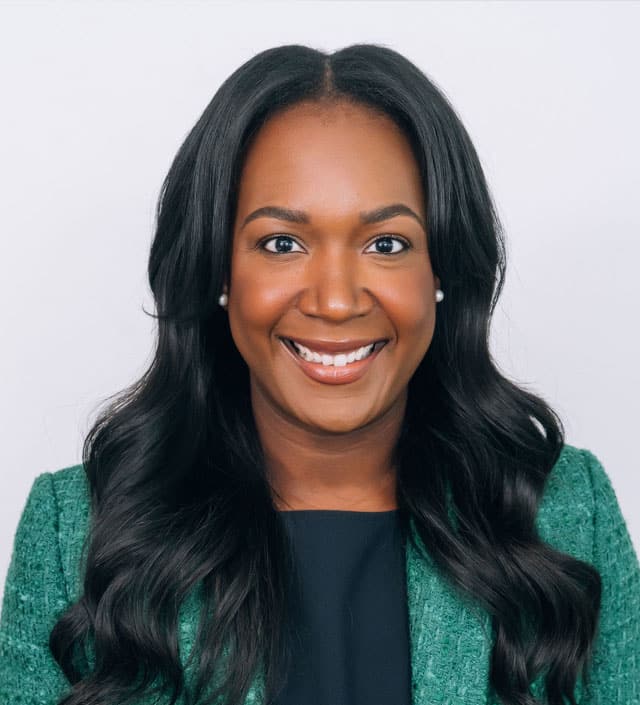
One of the most challenging aspects of being a financial advisor is establishing enough trust with prospects to convert them into clients. However, developing that trust further into meaningful relationships can be just as challenging — and even more crucial to the long-term success of your business.
So, what’s the best way to get someone over any doubts or fears about working with a new advisor? There’s always potential for new clients to experience “buyer’s remorse,” and by addressing the areas outlined below, you can put yourself in a better position to build new relationships with clients that hopefully last a lifetime.
Overcommunication is good
Moving to a new financial advisor can, of course, make people anxious. They’re not just entrusting us with their money. They trust us with their livelihood and the likelihood they achieve their life’s goals. As with every relationship, good communication is vital in easing those feelings of anxiety. It opens the doorway to clearly addressing whatever issue may be causing it in the first place.
As the advisor, it’s our responsibility to take a proactive role in the relationship — especially during this vulnerable period after clients first sign on. So, for any conversations or meetings, clients must be free to set the agenda. That’s not to say you shouldn’t come prepared to ask questions and have ideas. But often advisors are guilty of going through their own process checklist when in reality, it’s the client who will tell you what’s top-of-mind for them.
Every subsequent interaction is an opportunity to further strengthen that relationship. Honest, timely, and proactive communication is key. Avoid speaking in jargon when you engage with a client and explain things on their level. It’s easy to forget that clients may not know as much as we do, so it’s always better to explain things as simply as possible and check in often to gauge their understanding.
Additionally, it’s in your best interest to learn their preferred method of communication. Automated or personal emails may be the most convenient option, but there is undeniable value in picking up the phone and having a conversation. It gives you better insight into how they may be feeling: Do they still sound anxious or unsure? It gives you a chance to learn something new and an opportunity to address any concerns they might have.
Clients will appreciate the personal level of service, knowing you care enough to make the effort to reach out. It’s actually pretty amazing how effective a five-minute phone call can be. And don’t assume that all older clients prefer to communicate in a certain way — some may love to chat while others may prefer electronic communications.
R-E-S-P-E-C-T, find out what it means to clients
Respect is the foundation of any solid relationship and it’s the key to getting your clients to trust you. Treating clients with respect and honesty is often a motivating factor in whether they stick with you long-term.
Being respectful isn’t just being polite and smiling and asking someone how their day is going. Genuine respect is demonstrated through meaningful action, not shallow niceties. It’s not what you say, it’s what you do.
A few points to keep in mind:
- Their time is valuable, too. Being late to meetings, canceling last minute, or wasting time through lack of preparation is one of the surest ways to lose someone’s respect. Just because a client is retired doesn’t mean they don’t have a busy schedule or will tolerate your bad habits. Additionally, respect your clients’ time by ensuring they get the most out of a meeting with you. If a client doesn’t fully comprehend what they (or you) are doing and why, this can result in unmet expectations.
- Everyone in the meeting is important; otherwise, they wouldn’t be there. It’s imperative to consider everyone’s concerns, especially women who are so often overlooked or neglected when it comes to financial planning. It may be common for couples to have a “point person” managing the finances, but both partners need the opportunity to participate and feel heard.
- Follow through. If you say you will do something — whether it’s sending over a document, filing paperwork for them, researching a product, or whatever it may be — you better do it. The last thing you want is to appear sloppy and careless to a new client.
Get personal (within reason)
Yes, clients come to us for financial reasons and aren’t necessarily looking for a friend, but that doesn’t change the fact that we should and do care about them as people. Trust and meaningful relationships aren’t possible when every interaction is purely business. To truly set ourselves apart, we must take a thoughtful approach to client service.
It doesn’t have to be complicated, though. Start with the basics like you would with anyone else. Ask about where they grew up, if they have any family and what they like to do for fun. If you know they have children or grandchildren, ask about them. Try to find something you both relate to — whether it’s a sports team, a hobby, a college affiliation or something else. Even the weather. Commonalities create familiarity, which in turn helps to establish trust.
Additional reading: How to Minimize Financial Frustration of Surviving Spouses
By building this rapport up front, you’re strengthening your relationship and getting insight into what’s important to them. It will also give you a sense of how well you will work together.
Surprise and delight
Most advisors are probably somewhat familiar with the marketing concept of “surprise and delight” — that an unexpected enhancement to a product or service is more likely to generate a return customer. This doesn’t necessarily mean showing up at a client’s house with flowers and chocolates. Surprising them with additional benefits or an elevated level of service will further strengthen the relationship.
For a new client, you could consider developing a special report that digs deeper and gives more insight into their portfolio risk, Or you agree to reduce your fees for the first three months if they bring over a certain level of assets. Even something as simple as a birthday card can add unexpected value for clients and even increase the possibility they refer you to others.
Trust is hard to earn and easy to lose. You will be better equipped to build, maintain, and strengthen new client relationships with the right approach.
James “Beau” Henderson is the founder of RichLife Advisors LLC, a wealth and retirement planning firm that provides pre-retirees and retirees with holistic wealth management services. His firm provides investment advisory services through Fiduciary Capital, Inc. Beau is a licensed insurance professional in Georgia and holds RICP, CLTC and Certified Financial Fiduciary licensing.







